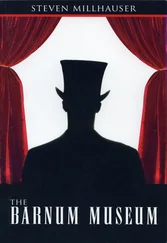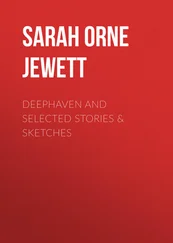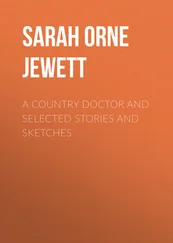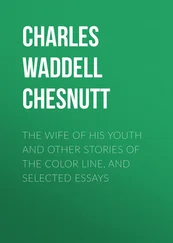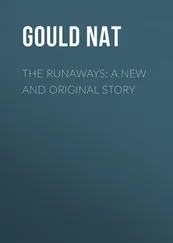11
It is probable that at some moment between birth and death, every inhabitant of our city will enter the Barnum Museum. It is less probable, but not impossible, that at some moment in the history of the museum our entire citizenry, by a series of overlapping impulses, will find themselves within these halls: mothers pushing their baby carriages, old men bent over canes, au pair girls, policemen, fast-food cooks, Little League captains. For a moment the city will be deserted. Our collective attention, directed at the displays of the Barnum Museum, will cause the halls to swell with increased detail. Outside, the streets and buildings will grow vague; street corners will begin to dissolve; unobserved, a garbage-can cover, blown by the wind, will roll silently toward the edge of the world.
12
The Chamber of False Things contains museum guards made of wax, trompe l’oeil doorways, displays of false mustaches and false beards, false-bottomed trunks, artificial roses, forged paintings, spurious texts, quack medicines, faked fossils, cinema snow, joke-shop ink spills, spirit messages, Martian super-bees, ectoplasmic projections, the footprints of extraterrestrials, Professor Ricardo and Bobo the Talking Horse, false noses, glass eyes, wax grapes, pubic wigs, hollow novels containing flasks of whiskey, and, in one corner, objects from false places: porphyry figurines from Atlantis, golden cups from El Dorado, a crystalline vial of water from the Fountain of Youth. The meaning of the exhibit is obscure. Is it possible that the directors of the museum wish to enhance the reality of the other displays by distinguishing them from this one? Or is it rather that the directors here wittily or brazenly allude to the nature of the entire museum? Another interpretation presents itself: that the directors intend no meaning, but merely wish to pique our interest, to stimulate our curiosity, to lure us by whatever means deeper and deeper into the museum.
13
As we wander the halls of the Barnum Museum, our attention is struck by all those who cannot, as we can, leave the museum whenever they like. These are the museum workers, of whom the most striking are the guards in their dark green uniforms and polished black shoes. The museum is known to be strict in its hiring practices and to demand of all workers long hours, exemplary performance, and unremitting devotion. Thus the guards are expected to be attentive to the questions of visitors, as well as unfailingly courteous, alert, and cheerful. The guards are offered inexpensive lodgings for themselves and their families on the top floor of one wing; few are wealthy enough to resist such enticements, and so it comes about that the guards spend their lives within the walls of the museum. In addition to the guards, whom we see in every room, there are the janitors in their loose gray uniforms, the peanut vendors, the gift-shop salesgirls, the ticket sellers, the coat-check women, the guides in their maroon uniforms, the keepers of the caged griffin, of the unicorn in the wooded hill, of the grelling in his lair, the wandering clowns and jugglers, the balloon men, the lamplighters and torchlighters of the second and third subterranean levels, as well as the carpenters, plasterers, and electricians, who appear to work throughout the museum’s long day, from nine to nine. These are the workers we see, but there are others we have heard about: the administrators in small rooms in remote corridors on the upper floors, the researchers and historians, the archivists, the typists, the messengers, the accountants and legal advisers. What is striking is not that there are so many workers, but that they spend so much of their lives inside the museum — as if, absorbed by this realm of enchantments, they are gradually becoming a different race, who enter our world uneasily, in the manner of revenants or elves.
14
Hannah Goodwin was in her junior year of high school. She was a plain, quiet girl with lank pale-brown hair parted in the middle and a pale complexion marred by always erupting whiteheads that she covered with a flesh-colored ointment. She wore plain, neat shirts and drab corduroys. She walked the halls alone, with lowered eyes; she never initiated a conversation, and if asked a question would raise her startled eyes and answer quickly, shifting her gaze to one side. She worked hard, never went out with boys, and had one girlfriend, who moved away in the middle of the year. Hannah seemed somewhat depressed at the loss of her friend, and for several weeks was more reserved than usual. It was about this time that she began to visit the Barnum Museum every day after school. Her visits grew longer, and she soon began returning at night. And a change came over her: although she continued to walk the halls alone, and to say nothing in class, there was about her an inner animation, an intensity, that expressed itself in her gray eyes, in her partly open lips, in the very fall of her hair on her shoulders. Even her walk was subtly altered, as if some stiffness or constraint had left her. One afternoon at the lockers a boy asked her to go to the movies; she refused with a look of surprised irritation, as if he were interrupting a conversation. Although her schoolwork did not suffer, for discipline was an old habit, she was visibly impatient with the dull routines of the day; and as her step grew firmer and her gaze surer, and her bright gray eyes, burning with anticipation, swept up to the big round clock above the green blackboard, it was clear that she had been released from some inner impediment, and like a woman in love had abandoned herself utterly to the beckoning halls, the high towers and winding tunnels, the always alluring doorways of the Barnum Museum.
15
The bridges of the Barnum Museum are external and internal. The external bridges span the courtyards, the statued gardens, the outdoor cafés with their striped umbrellas, so that visitors on the upper floors of one wing can pass directly across the sky to a nearby wing simply by stepping through a window; while down below, the balloon man walks with his red and green balloons shaped like griffins and unicorns, the hurdy-gurdy man turns his crank, a boy in brown shorts looks up from his lemon ice and shades his eyes, a young woman with long yellow hair sits down in the grass in a laughing statue’s shade. The internal bridges span the upper reaches of the larger halls. At any moment, on an upper floor, we may step through an arched doorway and find ourselves not on the floor of an adjacent room, but on a bridge high above a hall that plunges down through five stories. Some of these bridges are plain wooden arches with sturdy rails, permitting us to see not only the floor below but pieces of rooms through open doorways with ironwork balconies. Other bridges are broad stone spans lined on both sides with penny-toss booths, puppet theaters, and shops selling jack-in-the-boxes, chocolate circus animals, and transparent glass marbles containing miniature mermaids, winged horses, and moonlit forests; between the low roofs, between the narrow alleys separating the shops, we catch glimpses of the tops of juggled balls, the pointed top of a tent, the arched doorway of a distant room.
16
There are times when we do not enjoy the Barnum Museum. The exhibits cease to enchant us; the many doorways, leading to further halls, fill us with a sense of boredom and nausea; beneath the griffin’s delicate eyelids we see the dreary, stupefied eyes. In hatred we rage through the gaudy halls, longing for the entire museum to burst into flame. It is best, at such moments, not to turn away, but to abandon oneself to desolation. Gaze in despair at the dubious halls, the shabby illusions, the fatuous faces; drink down disillusion; for the museum, in its patience, will survive our heresies, which only bind us to it in yet another way.
Читать дальше







